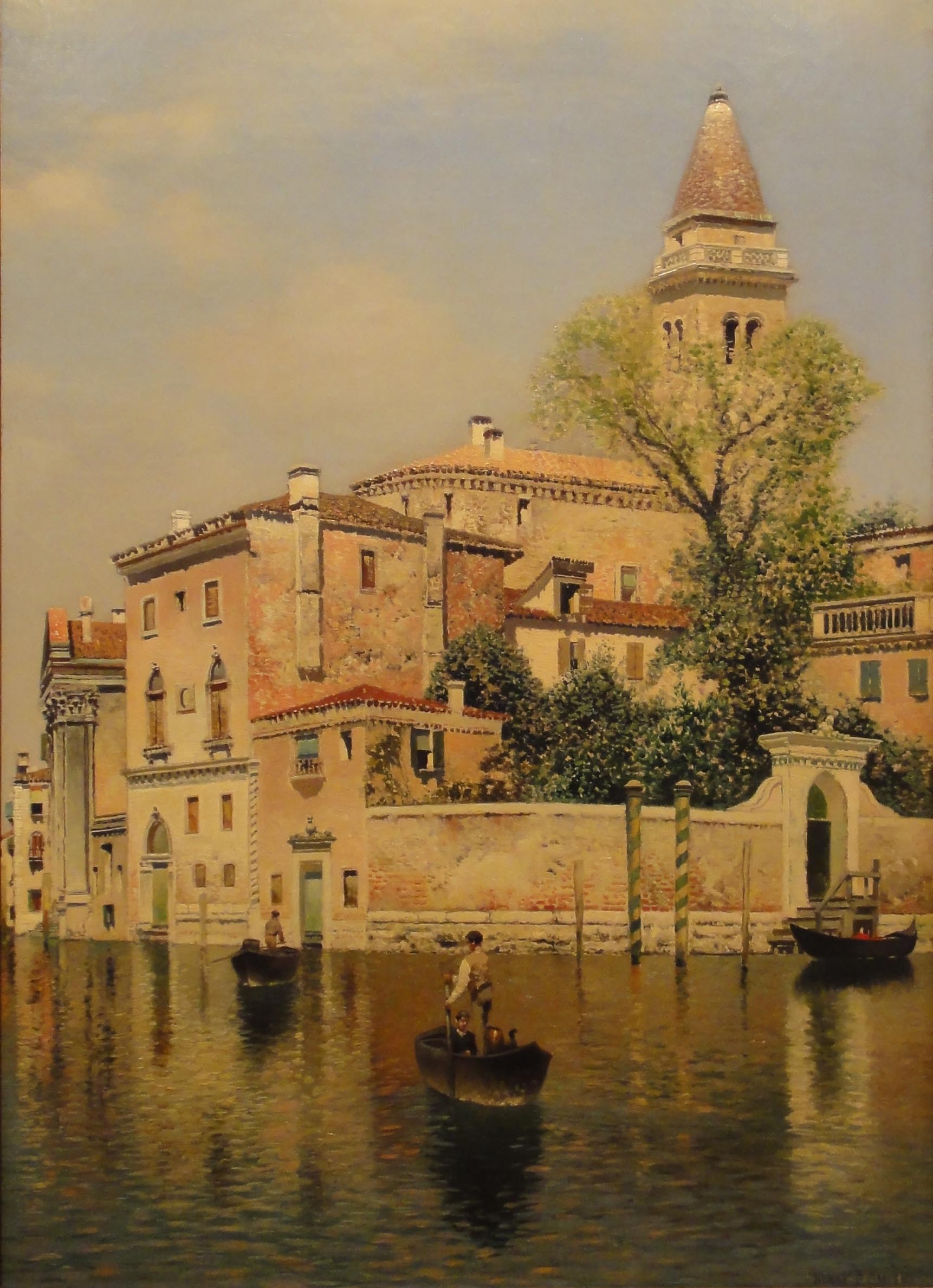Usually in this space I am eager to share my most exciting finds, such as my renewed appreciation for Wayne Thiebaud. This week, however, I am in a somewhat more low-key, contemplative mode as a result of my research on a work in the collection by Henry Pember Smith, a late-nineteenth century landscape painter. A while back I wrote about the artist Elizabeth Murray’s observations about changing tastes and the ways in which artists slip in and out of obscurity according to the oft-inscrutable whims of collectors, museums, and art historians. Henry Pember Smith definitely fits that bill, and he does so in a way that has prompted me to think about historical notability.
Smith mostly has escaped notice from art historians, though his work appears in a smattering of auction catalogues over the years. The Sterling and Francine Clark Art Institute, that excellent museum and research center in Williamstown, Massachusetts, owns a painting by Smith, and so he briefly appears in one of their collection catalogues.1 Margaret C. Conrads, the author of the catalogue, does good historical research, combing through various art magazines to trace a sketch of Smiths’ life. He was born in Connecticut, seems mostly to have lived in New York, and traveled widely, including to Venice, the setting of the painting in the CFAM collection.2

Smith is obscure enough that he might have escaped my attention. After all, if there is no research to be done on an artist, what good is the American Art Research Fellow? In looking at our photo of the painting, however, I was arrested. Venetian scenes were quite common at the time, having been popularized by Whistler and the lively tourist trade in the Italian city on the Adriatic. Even in a crowded genre, however, this one stands out. Smith takes as his perspective a spot opposite the canal (or perhaps on a gondola like the one in the foreground) from a grand building typical of the Venetian Renaissance. He renders the building with sharp precision, carefully delineating its architectural features and slightly shabbily overgrown garden. The scene is bathed in a warm, almost honeyed light, and he fills in all the charming details—most notably the gondoliers—that might have been expected of such a scene. It’s a fine painting, one that fits neatly in the museum’s excellent collection of nineteenth century American landscape. The painting’s quality, ultimately, is why I am so disappointed that I could not do more to bring Mr. Smith alive for future visitors.
As Conrads notes, Smith appears to have been obscure enough upon his death in 1907 that his brief obituary in the American Art News focused more on the cause of death (heart disease) and his sister’s social status (married to a famous jockey) than to his career.3 Yet that obituary also includes one more pithy detail. Its final sentence reads, “His estate, it is reported, is large.”4 Now, it could be that Smith inherited his wealth, or that he was a savvy investor in addition to a prolific painter. But given the evident quality of his work, I would like to think that Henry Pember Smith grew wealthy from the sales of his pictures of the shorelines of New and old England, New Jersey, and Italy. Ultimately, the historical notability that many artists seek seems to have evaded him. But who among us wouldn’t be delighted with a career—and a life—full of recognition, not to mention travel to the sun-drenched locales which Smith made his specialty?
1 Margaret C. Conrads, American Paintings and Sculpture at the Sterling and Francine Clark Art Institute (New York : Hudson Hills Press : Distributed in the U.S. by Rizzoli International Publications, 1990).
2 Conrads, 190.
3 Conrads, 190. “Obituary,” American Art News 6, no. 2 (1907): 3–3.
4 “Obituary.”

